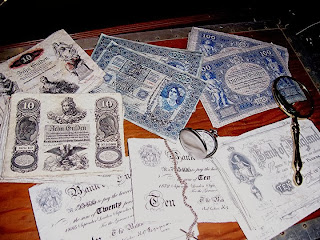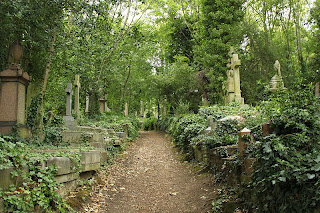Here is an incredibly cool and fun site. Thought you might enjoy it as much as I do.
http://thrilling-tales.webomator.com/derange-o-lab/pulp-o-mizer/pulp-o-mizer.html
Translate
Tuesday, December 31, 2013
Reproduction Victorian Era British Passport
Here is a little prop I created for myself to add a little more detail to my Steampunk/Victorian outfit.
Sabrage
What gentlemen or lady for that matter, wouldn't want to
learn how to do this to celebrate a great adventure or just impress your
guests. There are many theories on the origin of sabrage. One tells about how
this technique became popular in France when the army of Napoleon visited many
of the aristocrat domains. It was just after the French revolution and the
sabre was the weapon of choice of Napoleon's fearsome cavalry. Napoleon's
spectacular victories across all Europe gave them plenty of reason to celebrate.
During these parties the cavalry would open the Champagne with their sabres.
Napoleon probably encouraged this and is known to have said: "Champagne!
In victory one deserves it; in defeat one needs it."
Another one tells about Madame Clicquot who had inherited
her husbands small Champagne house at the age of 27. She used to entertain
Napoleon's officers in her vineyard and as they rode off in the early morning
with their complimentary bottle of Champagne, they would open it with their
sabre to impress the rich young widow. At your service.
More info…
http://www.confreriedusabredor.co.uk/sabrage/tutorial.html
http://www.sabreachampagne.com/products.html
http://www.confreriedusabredor.co.uk/sabrage/history.html
Bon Voyage for now…..
Monday, December 30, 2013
Code Duello
The challenge is issued, two gentlemen will settle their
dispute by dueling. To turn it down, would
mark a gentlemen as a coward for life. Weapons are chosen and they meet
at the agreed location. One or both gentlemen could be severely wounded or
killed. No matter, an insult has been spoken and neither gentlemen will yield
and honor must be upheld. Doctors are standing by, while seconds watch each
other warily.
Dueling, a
one-on-one showdown typically with swords or pistols, was a major part of many
societies, shaping the lives (and deaths) of gentlemen. A duel is a very
controlled fight. Two men and sometimes women would face each other on equal
terms. Duels follow an agreed upon set of terms, begin at a specified time and
are held at a specific place.
Duels didn't
happen spontaneously in most cases, because of an insult or slanderous remark,
one man would issue a challenge to another, who would often respond by
directing further matters to his second. A second was a friend who came along
to help prepare your weapons, make sure the other duelist wasn't going to be
ambushed. Seconds were also supposed to try to defuse the situation that led to
the duel by getting an apology from one party or another. Sometimes, seconds
often ended up fighting each other alongside the main duelists. In any event,
after one man issued a challenge, the seconds would arrange all the details.
The process could in some cases take days. When a duel was declared, any weapon
could be used, with either the challenger or his opponent given the choice
depending on which set of dueling rules was in use. One of the most common set
of dueling rules was the “Code Duello”. This set of rules covered the practice
of dueling and points of honor, was drawn up and settled at Clonmel Summer
Assizes, 1777, by gentlemen-delegates of Tipperary, Galway, Sligo, Mayo and
Roscommon, and prescribed for general adoption throughout Ireland. The Code was
generally also followed in England and on the Continent with some slight
variations. In America, the principal rules were followed, although
occasionally there were some glaring deviations.
Bon Voyage for
now....
More info..
http://www.speakeasy.org/~dr_gary/Naval/Duello/Right%20Frame.htm
http://knowledgenews.net/moxie/todaysknowledge/the-rules-of-duels.shtml
http://www.gwu.edu/~magazine/archive/2005_law_fall/docs/feat_duel.html
http://www.ballindalloch-press.com/society/
Travel Papers
Here are several pieces I created for a customer. Various reproduction banknotes and a Letter of Marque from the British government for and airship.
Sunday, December 29, 2013
Lincoln Funeral Train
President Abraham Lincoln died from his wounds at 7:22 P.M.
on Saturday, April 15, 1865. He was shot by John Wilkes Booth at Ford Theater
on April 14 1865. The Lincoln funeral train embarked on a trip that took 1700
miles and involved an estimated 30 million mourners
More info here..
http://www.abrahamlincolnsclassroom.org/Library/newsletter.asp?ID=116&CRLI=164Ghostly
Funeral Ghost Train of Pres. Lincoln
http://www.forgottenoh.com/Counties/Champaign/lincoln.html
http://www.psychics.co.uk/ghosts/ghosttrain.html
http://www.madametalbot.com/pix/posters/lincolntrain1.htm
http://www.headlesshorseman.co.uk/railway.html
http://www.paranormality.com/ghostly_transport.shtml
Ouija Board
There are many theories and stories concerning the Ouija
board history and how it began. Some say it dates back to ancient Greece,
others say China. Well, after a little research I found some interesting
things.
A man by the name
of Adolphus Theodore Wagner received the first patent for the "talking
board" in London, England in 1854. It was then called a
"psychograph" and was supposed to read the minds of people with
"nervous energy." The planchette (the piece touched with both hands
on the board while using it) was named after a French medium by the name of M.
Planchette and there were many planchette designs, including one with a pencil.
The Ouija board was
first introduced in the United States in 1890 as a parlor game sold in novelty
shops for $1.25. E.C. Reiche, Elijah Bond, and Charles Kennard created a new
design and it fast became popular because of the Occult trends of late 19th
century America. Modern Ouija boards were developed by inventor William Huld.
Huld took his design and sold his patent to Parker Brothers in 1966. The Ouija
boards, as we recognize them today, look nothing like the original prototypes.
Older versions were made out of wood and metal planchettes and are often sought
after by collectors. The 25 million Ouija boards sold by Parker Brothers since
its release were unfortunately made out of cardboard and have a plastic
planchette. In early 1999 Parker Brothers stopped manufacturing the Fuld
version and switched to a smaller less detailed glow in the dark version.
Because of its
popularity and mysterious origins, the Ouija board has taken on many myths and
lengends. In fact, I have some friends that will have nothing to do with them.
I have used it with other more adventurous friends and have never been fully
convinced. Seems the Ouija board will always have a mysterious power
surrounding it as long as people remain interested in the occult and have
active imaginations. However, as the Parker Brother's slogan says, "It's
only a game right?" What do you believe??
Bon Voyage for now..
More info:
http://www.museumoftalkingboards.com/history.html
http://www.allabouttheoccult.org/ouija-board.htm
http://www.damnedgames.com/cf_ouijahistory.html
http://www.hauntedbay.com/history/ouija.shtml
http://www.mostparanormal.co.uk/the-planchette.html
I am not Dead!!
DEAD PERSON: I'm not
dead!
MORTICIAN: Here -- he says he's not dead!
CUSTOMER: Yes, he is.
DEAD PERSON: I'm not!
MORTICIAN: He isn't.
CUSTOMER: Well, he will be soon, he's very ill.
DEAD PERSON: I'm getting better!
CUSTOMER: No, you're not -- you'll be stone dead in a
moment.......
The psychopathological fear of being buried alive is called
taphophobia, (from the Greek taphos, meaning "grave".) Literally it
translates into "fear of graves." Before modern medicine, this fear
was not irrational. During the 18th and 19th century many people had been
accidentally buried alive due to improper medical diagnoses.
Being buried alive was such an elaborated fear that those
who could afford it, made special arrangements. Certain burial customs, such as
bodies being viewed for up to ten days prior to being put in the ground were
observed. In fact, these plans included the use of a "safety coffin".
These special coffins were designed to ensure accidental burial would be
avoided. Special coffins contructed with; glass lids for observation, ropes to
pull bells for signaling, and breathing pipes for survival until rescued were
often used. None the less, sometimes
these horrific instances did happen.
"I'm not dead. I am alive.......I'm alive....."
Bon Voyage for now....
More info.....
http://danfingerman.com/dtm/archives/cat_patents.html
http://oakgrovecemetery.wordpress.com/victorian-funeral-customs-fears-and-superstitions/
http://www.sloughhistoryonline.org.uk/ixbin/hixclient.exe?a=query&p=slough&f=generic_theme.htm&_IXFIRST_=1&_IXMAXHITS_=1&%3Dtheme_record_id=sl-sl-burial&s=Igu7ixb1oCI
http://www.prairieghosts.com/grave_horror.html
Have your own coffins made to order:
http://www.vintagecoffins.com/index.html
When thinking of Victorian Horror, my mind always envisions
a cemetery. No matter if it is a horrific story of accidental burial or maybe a
grave robbing band of thieves, Highgate Cemetery has always stood out in my
mind. Graced in literature, this cemetery was founded in 1839 by Parliamentary
action. The act authorized the construction of seven private cemeteries to
solve the intolerable burial problems in London. The cemetery has many
permanent residences, including such famous people as Karl Marx. If you are
planning a trip to London, make sure you take a day and wonder through this historic
and mysterious cemetery.
"..theres always room for one more. Any
volunteers..."
More info:
http://www.highgate-cemetery.org/index.asp
http://www.highgatecemetery.net/
http://www.tchevalier.com/fallingangels/bckgrnd/cemeteries/
http://www.vintageviews.org/vv-tl/pages/Cem_Symbolism.htm
Thursday, December 26, 2013
Subscribe to:
Comments (Atom)


































